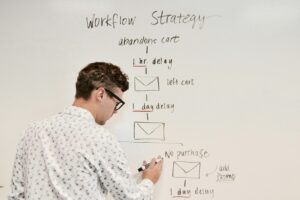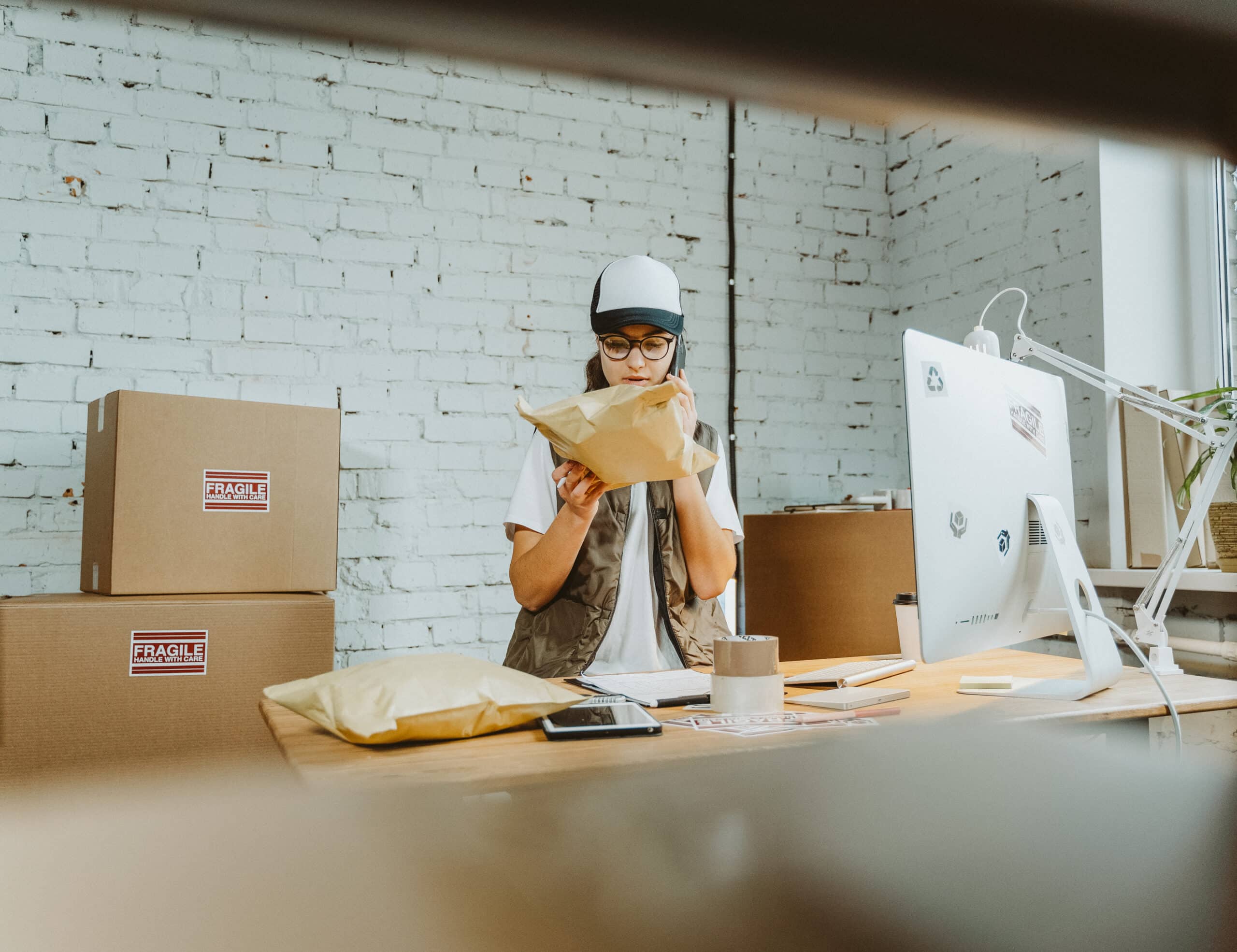Ecommerce, Entrepreneurship, Marketing • 9 Minute Read • Aug 5, 2024
The First Five Email Sequences Every Brand Needs
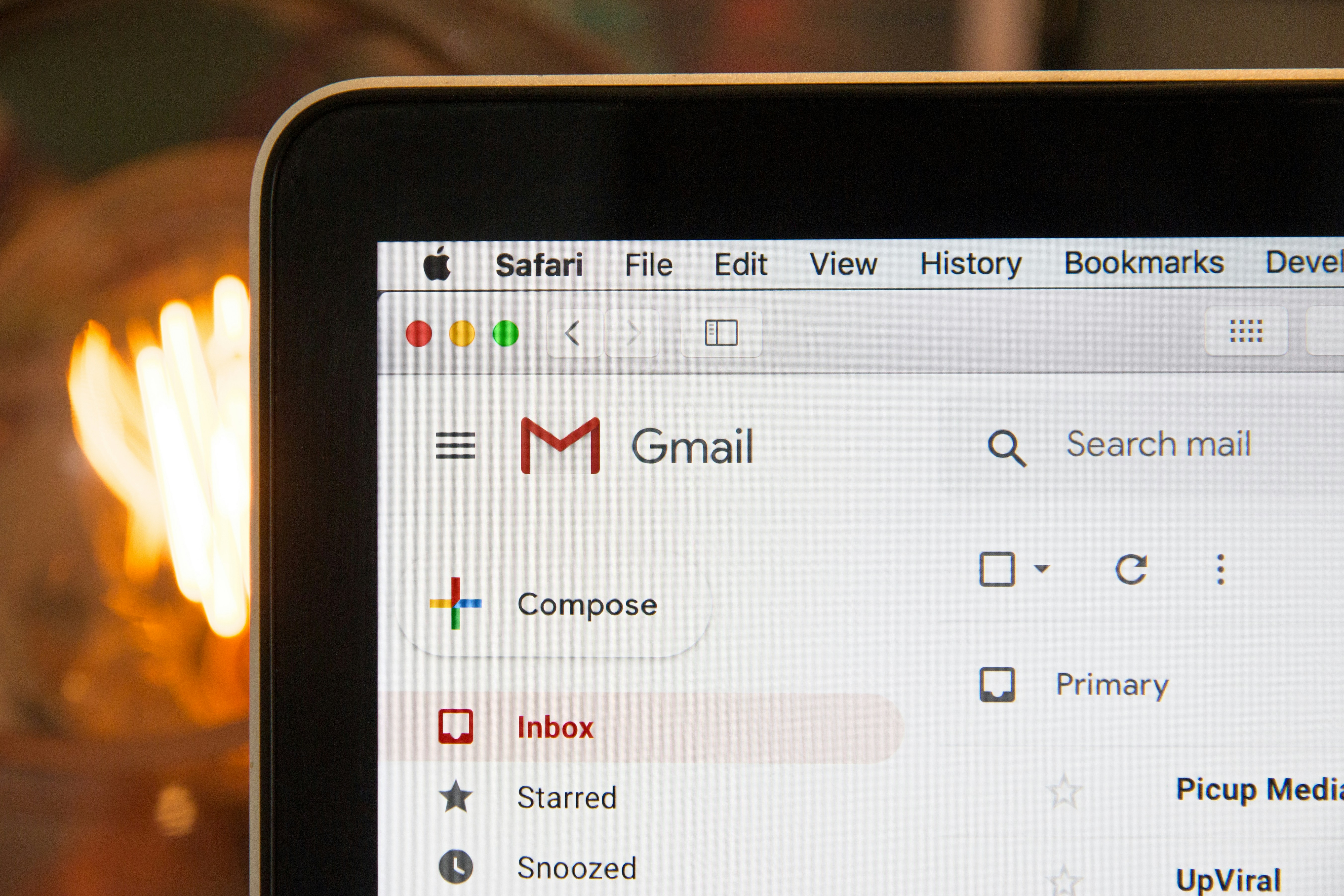
On average, email sequences have a 3,600% return on investment. That means for every $1 you spend on your email sequences, on average you’ll see a $36 return. Not only do email sequences offer a great return rate, but they are also a relatively small investment of time and energy.
Once an email sequence is set up with a specific trigger, it will continue to send specific sequences to the folks on your list. Who doesn’t want a money maker they can set and forget?
This type of marketing connects with your target audience at relevant moments, builds your brand authority, increases conversions, and improves your bottom line. While there are a lot of email sequences you could implement, these are the first five you should implement.
What is an email sequence?
An email sequence is a series of automated emails that are sent to folks subscribed to your list after they fulfill a predetermined criteria. This criteria (also known as a trigger) can include a specific timing or a specific action.
Email sequences are a great way to stay connected with your customers at relevant moments without sending them individually tailored emails.
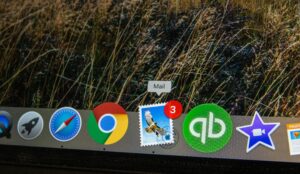
What do I need to send email sequences?
Before you can start sending out email sequences, you’ll need to get a couple of things set up first.
A lead generation form: This is a pop up on your website that allows you to collect emails. You can also use it to segment your list. This is often more effective than a ‘join our email list’ at the bottom of your website because it usually has an incentive tied to it.
Would your ideal customers be excited to get 15% off their first purchase? What about some kind of free bonus? Make sure you add value with your lead generation form.
An email platform: To set up sequences to send on their own, you’ll need an email builder that connects to your website. Look for a platform that also has templates you can leverage to create your emails.
Without an email platform, you won’t be able to set up the triggers to send these email sequences. Some of the most popular email platforms include Mailchimp, Mailerlite, and Active Campaign.
Scrub your email list: It may feel counterintuitive to remove inactive subscribers from your email list. But, it’s really important for your metrics to only have subscribers on your list that are active.
If you haven’t heard from someone in months or even years, consider sending them a re-engagement sequence (more info on this sequence below). If you don’t hear from them, take them off your list.
You’re now ready to set up your first email sequence.

#1: Welcome Sequence
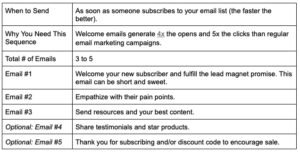
A welcome sequence keeps your brand top of mind when a new prospect is most interested in making a purchase.
Remember the last time you walked into a shop and no one said hello? That’s the same thing as asking someone to sign up for your email list and then sending them nothing. If someone signs up for your email list, they want to hear from you.
A welcome sequence is also known as a lead nurturing email sequence, or nurturing email sequence. It’s a friendly hello that educates them before making a purchase. Along the way, you’ll help them overcome objections while establishing your brand as an authority in your industry.
Necessary Emails
In the first email, let new subscribers know what to expect (like the content you’ll be sharing) and how often you’ll be emailing them.
The second email should empathize with their pain points. Let them know they’re in the right place and that you understand how they feel. Keep in mind that for this email and the next one, it’s more important to educate than to sell, as educating builds trust and familiarity.
In the third email, showcase your expertise. Solve the pain points you previously mentioned (without pushing a hard sale) and share your best resources with them. This could be product reviews from third-party vendors, helpful blogs, webinars, or your frequently asked question page.
Extra Emails
In the fourth email, share experiences from your customers. This tells the individual that they don’t have to take your word on having great products. Other people believe your products are great, too.
In the fifth email, thank them again for being a part of your community, or provide a small discount (or sample) to encourage action. This can be a great place to include a quiz to help them pick between similar products.
How long you wait between sending each email, and whether or not you should add additional emails depends greatly on your industry. After this blog post, look up some industry specific standards for a welcome sequence to dial in your timing and total number of emails.
#2: Onboarding Email Sequence
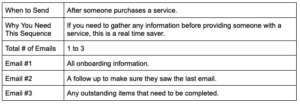
An onboarding email sequence is different from a welcome sequence and a first time purchase sequence. Onboarding sequences are specifically for service based organizations that need to communicate their next steps with their customers.
For example, if you order a water bottle online, the only information you need is when the water bottle will arrive. If you are getting a new granite countertop installed in your kitchen, you may need additional information like:
- How to sign up for an install day
- What to do to prep for the installation
- What other products are needed at the same time (like your sink or faucet)
- Any important forms
- Helpful links they can refer to in the meantime
Setting Healthy Expectations
These emails can also help you set healthy expectations with your customers through information like:
- How they can set up an account with you (especially if you offer repeat services)
- What they can expect from your business
- What communication looks like moving forward
- Any important dates
The onboarding sequence makes sure your customer’s are prepared for their service. These emails could be really long and last a couple of months, or short and sent over a day or a week.
Also, if you have a complicated product, you could send an onboarding sequence after your customer receives their product to increase adoption rates. In the onboarding sequence, you can send information on setup and how to use your product.
You can expect high open rates on onboarding sequences. If for some reason your open rates are low, you may want to double check your subject and preview text, as well as for back-end glitches.
#3: Abandoned Cart Sequence
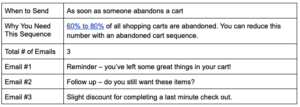
An abandoned cart sequence alerts customers when they haven’t completed a check out. Normally, these emails include information on the cart, prices, reviews, and timeframe left to complete the checkout before the cart expires.
In each of these emails, you’ll want to give your customers their direct link to the cart to make checkout easy. A countdown can also increase urgency and encourage people to make a purchase before it’s too late.
A small discount can also sometimes be the final nudge someone needs to complete their purchase, but it’s wise to offer this in your last email, without a lot of time left for them to deliberate.

#4: First Time Purchase Sequence
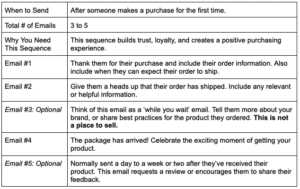
Picture going to a burger join and ordering food. The cashier rings you up, takes your money, and instructs you to find a table. You wait for your burger. You’re not sure how they’re supposed to know who ordered what. You don’t have a number for your order, you’re just left waiting for your food until it hopefully arrives.
Not the most ideal scenario, right?
Well, the same thing happens if someone buys your product and you don’t send them a first time purchase sequence. How are they supposed to know when their product arrives? Are they sure they placed the order? What’s the best way to get a hold of you if they need to make a change?
These are all things you can communicate in your first time purchase sequence.
Educate New Customers
There are also opportunities to educate the buyer about your brand or product, as well as request a review once they’ve received your product.
You can also follow up with an upsell or cross-sell email sequence after the welcome sequence. This encourages first time buyers to check out similar, but more expensive products, or products that compliment yours.
For example, if someone buys foundation from your business, you may want to send them an email about your blush, or mascara, including key benefits and features. If they’re pleased with their first time purchase, they’ll be much more likely to trust you and buy one of your up-sells or cross-sells.

#5: Re-Engagement Sequence
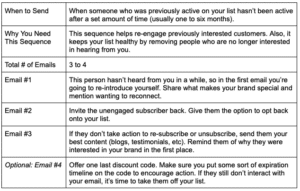
Say someone has bought something from you in the past – but you haven’t heard from them in over 30 days. Or maybe it’s been even longer… A re-engagement sequence encourages your subscribers to interact with your emails again and confirm they’re still interested in your brand.
This sequence builds rapport with previously interested prospects and reconnects with out of touch, but ideal, customers. It gives them the opportunity to say, ‘yes, I do still want to be a part of your marketing.’
You Can’t Win Everyone Back
Once you send this sequence to someone, at the end if they haven’t re-engaged, it will be time to take them off your list. This helps keep your list metrics healthy to make sure they’re on par with industry standards.
Don’t be discouraged if you see quite a few of your subscribers fall off. The average email database loses around 25% of their contacts per year.
Time to Set Up Your First Email Sequence
Email lists are a unique kind of marketing because, unlike social media, it allows you to have total control over your subscribers and your messaging. No algorithm change is going to ruin your ability to communicate with your list. And once you have it set up, it works for you forever.
Many businesses know this, which is why they invest heavily in emails. So far in 2024, around 300.4 billion emails were sent and received each day. And, there are around 4 billion email users worldwide. So there are many, many opportunities to connect with prospects and customers in their inbox.
Set up one (or all) of these sequences today.
Are you looking for more ways to amplify your brand? Want to see some of these sequences in action? Sign up for our email list (at the bottom of this page) for more helpful brand-building information straight to your inbox!
Or check out these blog posts on How to Respond to a Negative Review and Tips to Create a Great Product Page.

